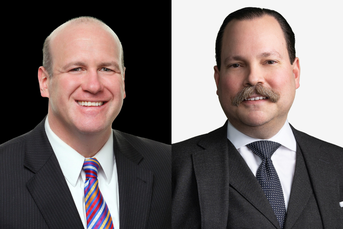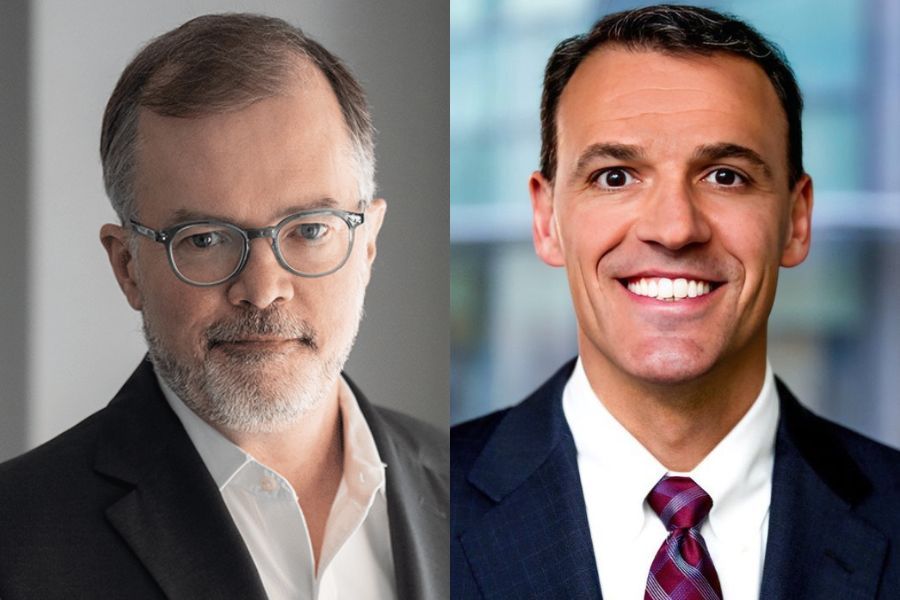One year later, is Finra 360 working?
A year after launching its self-examination, the regulator is getting both praise for its efforts and calls for more concrete results.
Reforming a behemoth regulatory agency is a tremendous undertaking. When Finra’s new chief executive Robert W. Cook indicated that he sought to do just that, more than a few eyes rolled in skepticism over how likely a meaningful transformation really was.
But a little more than a year after launching an examination of itself, the Financial Industry Regulatory Authority Inc. is receiving praise for the effort — as well as calls for more substantive results.
Shortly after taking office in August 2016, Mr. Cook began what he called a listening tour: seeking feedback from the approximately 3,700 brokerages and 630,000 registered representatives that the organization regulates, as well as investor advocates, industry trade groups and others.
Mr. Cook’s listening tour dovetailed with Finra 360, a comprehensive organizational self-examination launched in 2017 with the goal of improving operations to become more efficient and effective. His attempt to reform the broker-dealer self-regulator came after widespread criticism of Finra as heavy-handed, opaque and operating largely on its own, despite oversight by the Securities and Exchange Commission.
Mr. Cook is receiving almost universal praise for trying to make Finra a more open and responsive regulator.
“Finra is on the verge of a cultural change,” said Mark Cresap, president and owner of brokerage firm Cresap Inc. and a former Finra board member. “Robert’s [listening] tour has a lot to do with that.”
Changing the mindset at Finra has been the most significant advance made in Finra 360’s first year, Mr. Cook said in an interview.
“The big-picture accomplishment has been really getting the organization as a whole to begin to think about how we can constantly focus on continuous improvement, and how we can be a thoughtful, effective, efficient regulator and listen carefully to our stakeholders … and to see it embraced so eagerly by our employees,” Mr. Cook said.
At the one-year mark, the regulator touts among the successes of Finra 360 the publication of Finra’s first budget overview and financial guiding principles, the consolidation of enforcement activities, the first report on examination findings and improvements in engagement with member firms through changes to Finra advisory committees.
One significant accomplishment of the effort so far is that it has bought Mr. Cook a lot of political goodwill among Finra members and other regulators, who seem to be willing to be patient with the results.
For instance, SEC Commissioner Hester Peirce, who wrote a paper critical of Finra operations before taking on her new role, doesn’t anticipate a Finra-reform rule coming from the SEC.
“I’m optimistic we’re going to do a better job overseeing Finra, which, combined with Robert Cook’s effort, I think will be beneficial,” Ms. Peirce said. “People do want to give Finra space to make changes itself.”
Carrie Wisniewski, president of Bridge Capital Associates Inc., a broker-dealer that focuses on investment banking and M&A, is likewise optimistic about Mr. Cook.
“I think he’s a straight shooter,” she said. “He was really listening and not just trying to placate the membership.”
One owner of a small broker-dealer said Finra has become friendlier to firms like his.
“It’s been a sea change in attitude at the district level from what we used to have,” said Bob Bagley, owner of Bullish Bob Bagley Securities. “Finra is communicating with us much better.”
Although Finra is getting high grades for its reform attempts, it is receiving mixed reviews on whether they have amounted to much so far.
“Overall, Mr. Cook probably deserves a ‘B’ for effort and a ‘C+ to incomplete’ on the execution side,” said Andrew Stoltmann, a Chicago securities attorney and president of the Public Investors Arbitration Bar Association. “We’re judging a painting that is 50% complete, which is hard to do.”
Pretty much every pat on the back Mr. Cook receives is followed by a hand raised in caution that the organization is far from transformed as of yet.
“It’s been successful in the sense that there’s been a real effort to hear from as many people as possible who are affected by Finra,” Ms. Peirce said. “The harder road lies ahead.”
Finra responded to withering criticism of the lack of transparency around its finances by publishing its first budget estimate in January. Finra reports aggregate financial results in its annual report each summer, but the numbers it released earlier this year provided a look ahead at operating expenses, cash flow by functions and other areas.
Push for more detail
But critics are pushing for more from Mr. Cook. They say the overview of the regulator’s budget — which showed an operating revenue projection of $822 million and an expense projection of $888 million — didn’t go into enough detail.
“It doesn’t have the degree of specificity you would expect from a public company or the government,” said David Burton, senior fellow in economic policy at the Heritage Foundation. “It’s more like talking points about a budget.”
Ms. Wisniewski agreed that the budget glimpse didn’t show enough.
“They give a budget summary; it’s not really a budget,” she said. “I would like to see transparency the way member firms have to be transparent to Finra.”
In an in-depth InvestmentNews analysis of Finra last fall, as well as in a congressional hearing a few days after the article’s publication, Finra was criticized for not revealing how it spends its fine proceeds, which hit a record $173 million in 2016.
“It’s a year into the [Finra 360] initiative, and we still have no idea where the fine money is going,” Mr. Stoltmann said.
Mr. Cook said Finra will reveal how it spends its fine money this summer.
“That will come in our annual financial report,” he said.
Another sore point has been Finra’s treatment of small firms, many of which argue Finra caters to its large-firm constituency. They say large firms can more easily comply with Finra rules that are suffocating and extraordinarily expensive for small broker-dealers.
Mr. Cook has made a point of talking to small-firm owners during his listening tour. He also highlights Finra moves to help small firms, such as posting a compliance calendar and compliance vendor directory on its website, as well as establishing a small-firm hotline.
“That may help, but it’s not dramatic reform,” Mr. Burton said. “That’s not going to make a major difference. It’s small-bore.”
Critics say these steps only scratch the surface of what small firms really need: more relief from Finra membership fees that cut deeply into their revenues and from Finra rules that were written for large firms with dedicated compliance functions.
Ms. Wisniewski hasn’t seen much improvement on this front over the last year, but is hopeful Finra will take another look at how it assesses its member fees, which she says are disproportionately borne by small firms.
“I’m optimistic that something will change for small firms, because the cost of doing business is exponentially more than it is for large firms,” she said. “If they don’t do something to address the regulatory fees that small firms pay, they’re going to see a continued shift of small B-Ds to become RIAs.”
The examination frequency for small firms is likely to ease. In a Finra 360 progress report released last week, the regulator said high-risk firms could be examined annually while those with lower-risk profiles will be examined on four-year cycles.
“Figuring out the appropriate exam structure is the biggest thing to come this year,” Mr. Cook said.
As part of Finra 360, the regulator has already consolidated two enforcement teams into one unit under Susan Schroeder, who reports directly to Mr. Cook.
“You’ll see more selective enforcement actions,” Mr. Cresap predicted. “There will be more clarity on why Finra brought them. Because of that consolidation, it will be a better enforcement process.”
Exams and enforcement
Mark Attar, a partner at Schiff Hardin, said changing the examination and enforcement programs is an ambitious undertaking.
“I would hope that any such reform results in a more consistent application of findings and sanctions,” he said.
Mr. Burton likes the direction of Finra 360, but asserts that it is time to reach meaningful milestones.
“We’re at the point where they need to actually start making substantive changes rather than just talking about change,” he said.
Mr. Cook acknowledged that the focus for governance changes in the first year has been on “low-hanging fruit; things we can readily implement and we think are very meaningful.”
But he said “there is more to come” from Finra 360, which Mr. Cook projects will last a couple of years. He wants to hear from those who think the initiative is falling short.
“I’m eager for feedback,” Mr. Cook said. “If people think that anything we’ve done doesn’t go far enough, or there’s more we can do, I’m all ears.”
Although the soft-spoken Mr. Cook continues to enjoy a honeymoon thanks to his listening tour and Finra 360, demands are likely to grow for him to produce bigger results. Finra’s membership has declined from 4,146 firms in 2013 to approximately 3,700 today — and more brokerage industry consolidation is likely.
In fact, Finra’s viability as the brokerage industry’s regulator could hinge on what Mr. Cook achieves with Finra 360.
“He’s not doing it out of the goodness of his heart,” Mr. Stoltmann said. “He’s facing a balancing act on a tight rope that would make the Wallenda family envious.”
Learn more about reprints and licensing for this article.








